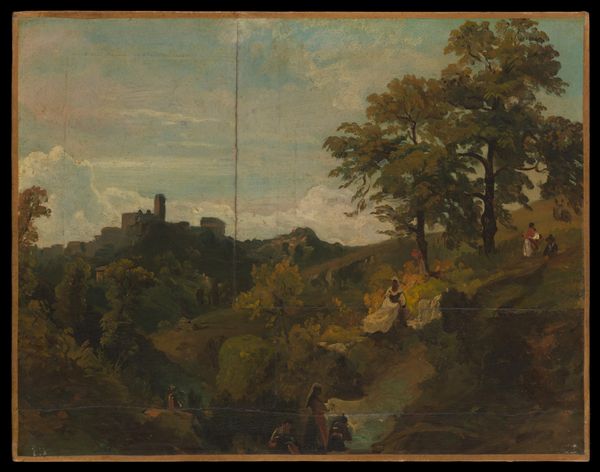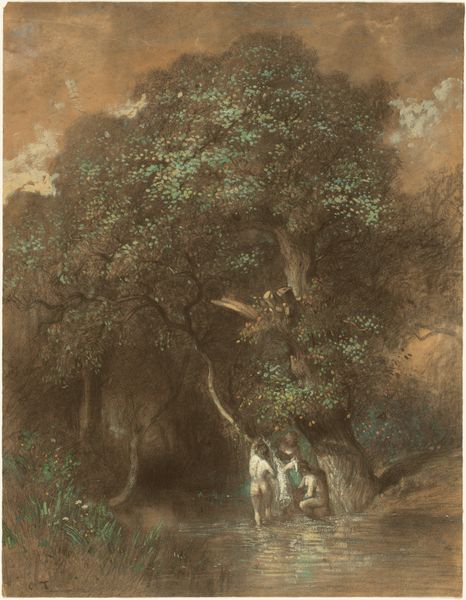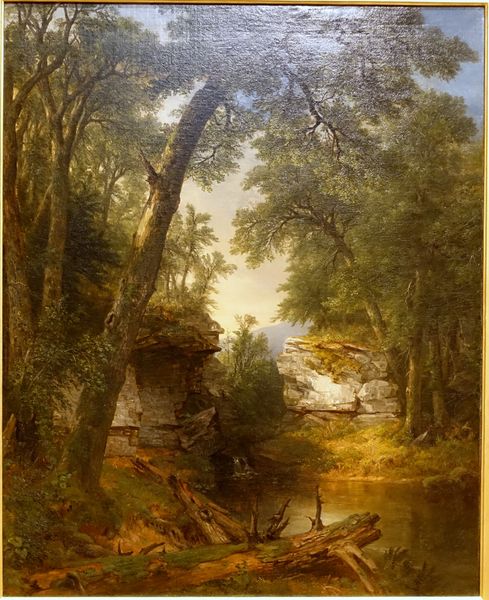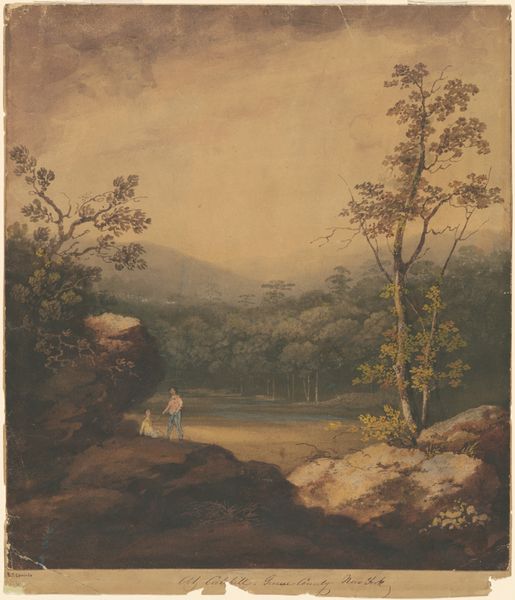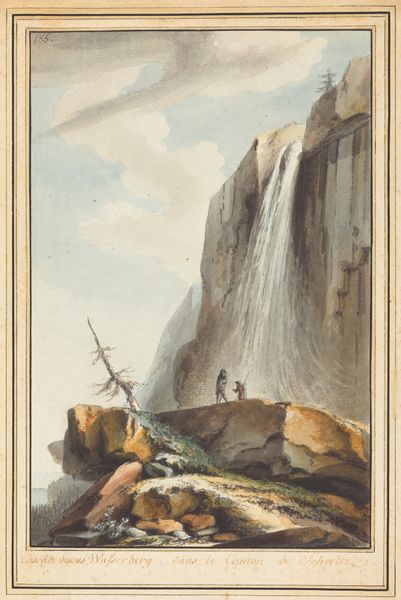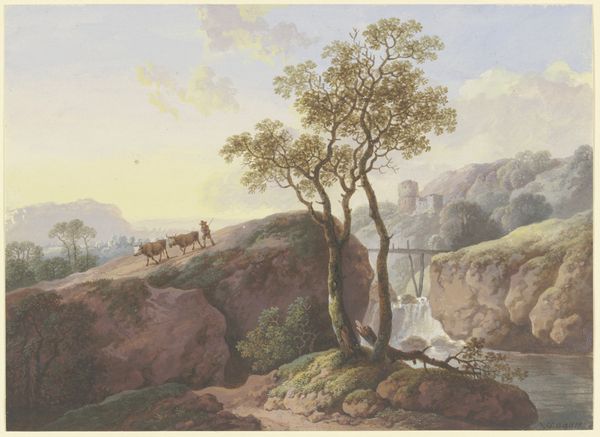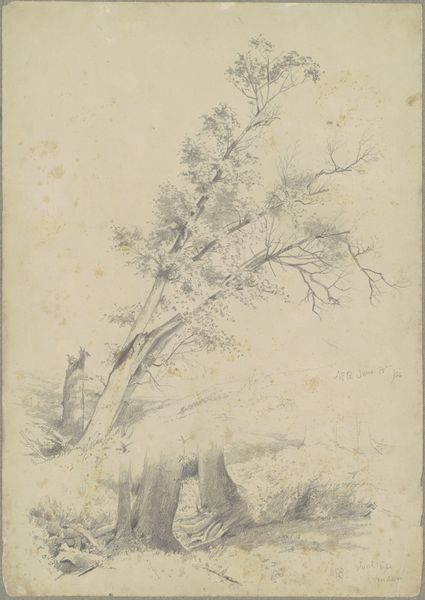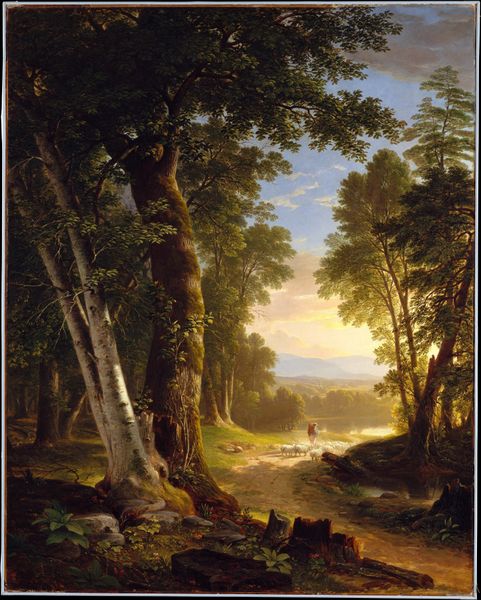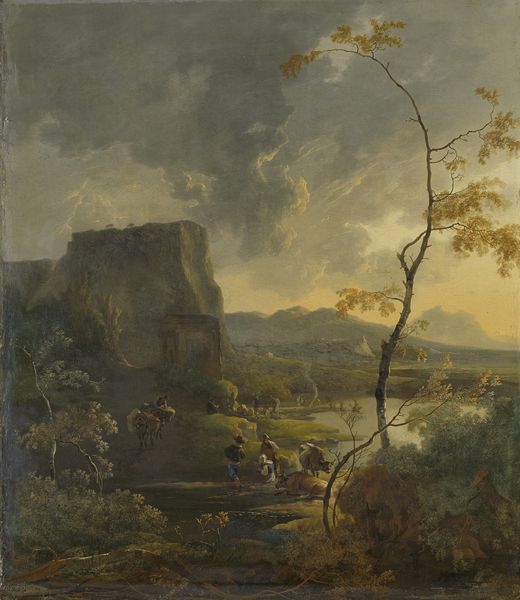
Dimensions: 83 3/4 x 51 5/8 in. (212.7 x 131.1 cm)
Copyright: Public Domain
Editor: This is François-Louis Français' "Gathering Olives at Tivoli" from 1868, painted with oil. I'm immediately drawn to the large tree dominating the foreground, and then by how small it makes the people seem as they work. What symbols do you see here? Curator: The olive tree itself is a powerful symbol, deeply embedded in cultural memory. Throughout history, particularly in Mediterranean cultures, the olive branch represents peace, fertility, and prosperity. Its presence suggests a harmonious relationship between humanity and nature. But note the figures within the tree—does their action reflect that? Editor: Well, someone is high up in the branches, almost fighting the tree. I guess there’s that tension between actively engaging with the natural world versus passively receiving from it? Curator: Precisely. The waterfall in the background hints at nature's untamed power, a reminder that this cultivated landscape exists within a broader, wilder context. Consider the tower; its solid structure signifies civilization, yet is dwarfed by the expansive landscape, thus creating an almost paradoxical statement of dominance and vulnerability. Editor: So, you’re saying these symbols play off each other, creating a dialogue about our place in nature? The peace of olives versus the effort of harvest and, yes, against the sublime landscape… Curator: Yes. Each visual element resonates with accumulated meaning, layering history and value onto the scene. What feelings are evoked? Editor: Initially it felt picturesque. Now I feel there is perhaps something uneasy in its idealized vision. Thank you; this makes me want to explore more. Curator: And I’m reminded of how artistic representations not only depict but also shape our understanding of nature and culture.
Comments
No comments
Be the first to comment and join the conversation on the ultimate creative platform.

